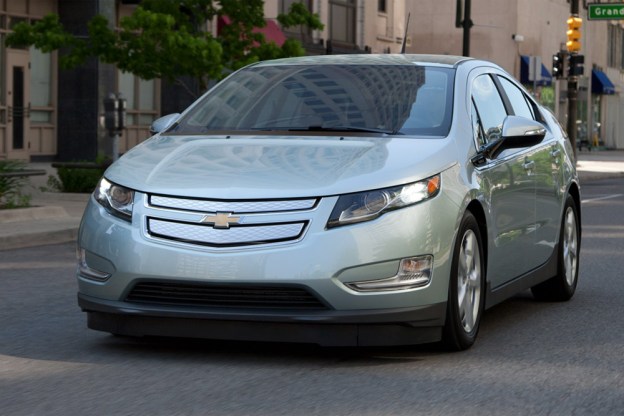 “The electric car is not dead,” Mark Reuss, President, General Motors North America told the Detroit News at this week’s Detroit Auto Show. Despite lower-than-expected sales, GM is still committed to its extended-range electric Chevrolet Volt.
“The electric car is not dead,” Mark Reuss, President, General Motors North America told the Detroit News at this week’s Detroit Auto Show. Despite lower-than-expected sales, GM is still committed to its extended-range electric Chevrolet Volt.
The Volt is technically a plug-in hybrid, because it has an onboard gasoline engine. However, the engine is only used to power the wheels under very limited circumstances. Most of the time, it is used to recharge the Volt’s batteries.
When it launched in late 2010, the Volt seemed the like the perfect compromise between zero-emission electric motoring and flexible gasoline power. However, sales numbers were disappointing.
In 2011, Chevy sold 7,671 Volts, falling short of its 10,000-unit goal. In early 2012, dealers had so many of the cars on their lots that production had to be shut down for a few weeks to get rid of them. Chevy still managed to move 23,461 unites in 2012, an increase of 205 percent, but still well short of GM’s 45,000-unit goal for the year.
Regardless, Reuss said GM “couldn’t be happier… with the Volt.” He believes the current Volt, and a second-generation model that will reportedly be a big improvement over the original, represents a first step toward an electric car (or presumably, a plug-in hybrid) that can rival the average gasoline car’s performance and price.
“We’ll see the day when we have an affordable electric car that offers 300 miles of range with all the comfort and utility of a conventional vehicle. We’re talking about a transformation here. And transformation takes time.”
The “affordable” part of that vision is what might take the most time. There is an electric car with a (nearly) 300-mile range, but it’s not made by GM. With the biggest, 85-kWh battery pack, the Tesla Model S has 265 miles of range, and its five-door hatchback body is very utilitarian. However, that Model S costs $79,900.
For the time being, GM’s confidence in electricity is also being expressed in a premium product. The Cadillac ELR uses the Volt’s powertrain, but Cadillac levels of luxury will probably add a significant amount to the sticker price. The ELR will be built alongside the Volt and the European Opel/Vauxhall Ampera at GM’s Detroit-Hamtramck assembly plant, and economies of scale could eventually lower the price of the cars’ powertrains.
Last year’s Volt sales may have fallen short of GM’s expectations, but they still handily beat fully electric cars like the Nissan Leaf (9,819 sold) and Ford Focus Electric (685 sold).


